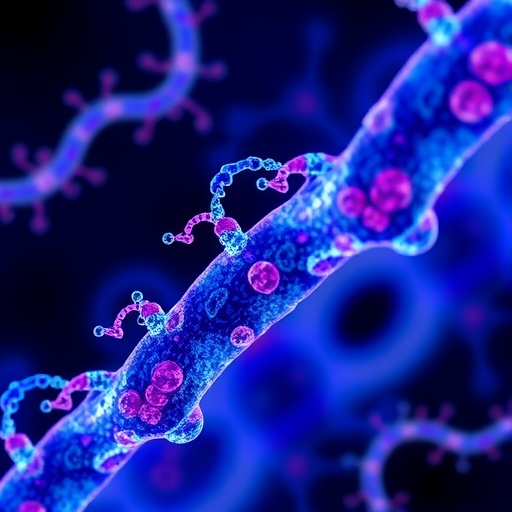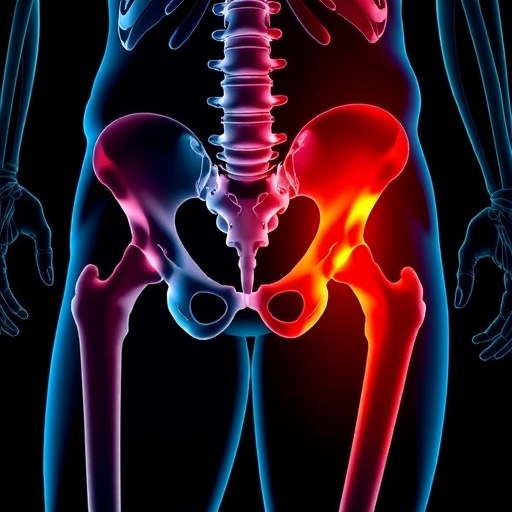
In a groundbreaking study that pushes the boundaries of cancer biology, researchers have illuminated the intricate molecular mechanisms driving colon cancer proliferation through post-translational modification of nuclear proteins. The team led by Kim, Y., Lee, KT., and Kim, H.B. has identified the pivotal role of O-GlcNAcylation—a dynamic form of glycosylation—in modulating the behavior of NONO, a multifunctional nuclear protein integral to paraspeckle assembly. This modification not only influences the structural organization of paraspeckles but also dramatically impacts the propagation of colon cancer cells, opening promising new avenues for therapeutic intervention.
Colon cancer ranks among the most prevalent and deadliest malignancies worldwide, often proving resistant to conventional treatment modalities. The quest to unravel its molecular underpinnings has propelled scientists to interrogate nuclear architecture and its modulation by biochemical modifications. Paraspeckles, subnuclear bodies involved in RNA regulation and gene expression, are increasingly recognized for their roles in cellular stress responses and cancer progression. NONO, a core paraspeckle component, orchestrates numerous nuclear processes including RNA splicing, transcriptional regulation, and DNA repair. Understanding the functional modulation of NONO is thus paramount to grasping how paraspeckles contribute to oncogenesis.
Central to this study is O-GlcNAcylation, a reversible post-translational modification where N-acetylglucosamine moieties attach to serine and threonine residues on proteins. Unlike classical glycosylation confined to extracellular proteins and membranes, O-GlcNAcylation occurs within the nucleus and cytoplasm, serving as a critical regulatory mechanism akin to phosphorylation. This modification reflects cellular metabolic states due to its dependence on nutrient-derived substrates, thereby linking metabolic flux to protein function and signal transduction. The research team hypothesized that O-GlcNAcylation of NONO could fundamentally alter paraspeckle assembly and function in colon cancer cells.
Employing advanced mass spectrometry and biochemical assays, the researchers meticulously mapped the O-GlcNAc sites on NONO proteins extracted from human colon cancer cell lines. Their analyses revealed specific glycosylation patterns localized to key functional domains of NONO, suggesting a direct impact on its interaction with RNA and other paraspeckle proteins. Subsequent imaging and co-immunoprecipitation experiments confirmed that O-GlcNAcylated NONO enhances the nucleation and structural integrity of paraspeckles, thereby modulating their capacity to sequester RNA transcripts involved in cell cycle regulation and apoptosis.
Perhaps most strikingly, the study demonstrated that disrupting O-GlcNAcylation through pharmacological inhibitors or genetic manipulation led to marked disassembly of paraspeckles, impairing colon cancer cell proliferation. This effect was accompanied by alterations in gene expression profiles favoring cell cycle arrest and intrinsic apoptotic pathways. These findings not only underscore the functional significance of NONO’s glycosylation status but also highlight paraspeckles as critical hubs translating post-translational signals into phenotypic outcomes that govern tumor progression.
Delving deeper into the mechanistic landscape, the researchers explored the upstream regulators of NONO O-GlcNAcylation. They identified O-GlcNAc transferase (OGT) as the enzymatic protagonist catalyzing this modification within the nuclear milieu. Elevated OGT expression and activity in colon cancer tissues correlated positively with NONO glycosylation levels, paraspeckle abundance, and clinical markers of aggressive tumor behavior. This axis delineates a novel metabolic signaling pathway intertwining nutrient sensing with nuclear organization and malignancy, offering tantalizing prospects for targeted therapy.
The implications of this discovery extend beyond colon cancer, as paraspeckle dysfunction and metabolic reprogramming are emerging hallmarks of diverse oncogenic contexts. Moreover, O-GlcNAcylation’s reversible nature makes it an attractive molecular switch amendable to pharmacological modulation. Ongoing studies inspired by these findings are investigating small molecules capable of selectively altering NONO glycosylation, aiming to destabilize paraspeckle assembly and impair cancer cell survival without harming normal tissues.
Furthermore, this work sheds light on the complex crosstalk between metabolic pathways and nuclear architecture. Colon cancer cells notoriously exploit altered glucose metabolism, the so-called Warburg effect, to sustain rapid proliferation and survival under stress. By directly linking the hexosamine biosynthetic pathway product UDP-GlcNAc—the substrate for OGT—to the regulation of paraspeckle components, the study provides a molecular framework connecting cancer metabolism to gene regulatory landscapes. This integration offers a rationale for combining metabolic inhibitors with agents targeting paraspeckle dynamics in future anticancer regimens.
In parallel, the research underscores the multifaceted roles of paraspeckles and NONO beyond structural scaffolding. Paraspeckles act as dynamic reservoirs for regulatory RNAs, modulating transcript availability and thus influencing myriad downstream pathways. Through O-GlcNAcylation-dependent assembly, paraspeckles can respond to cellular metabolic cues and environmental stimuli, adjusting gene expression programs to favor tumor growth and adaptability. This adaptive capacity positions paraspeckles as central players in cancer cell plasticity and survival strategies.
This compelling study also advocates revisiting paraspeckle biology through the lens of glycobiology, an intersection previously underexplored in nuclear regulation. The intricate sugar modifications decorating nuclear proteins appear to constitute a hidden regulatory code, modulating protein-protein and protein-RNA interactions essential for nuclear body formation and function. Understanding this ‘glycocode’ could reveal new dimensions of nuclear organization and its perturbation in diseases.
Clinically, assessing NONO O-GlcNAcylation levels and paraspeckle integrity may emerge as valuable biomarkers for colon cancer prognosis and treatment responsiveness. The quantitative relationship between these molecular features and tumor progression suggests potential roles in patient stratification and early detection. Additionally, monitoring these parameters could gauge therapeutic efficacy in interventions aimed at disrupting paraspeckle assembly or altering metabolic states.
The research by Kim and colleagues, therefore, sets a precedent in cancer molecular biology by unveiling a previously unrecognized layer of nuclear regulation mediated by O-GlcNAcylation. Their elucidation of the NONO-paraspeckle axis not only advances fundamental understanding but also catalyzes the exploration of innovative therapeutic modalities targeting post-translational modifications within nuclear compartments.
As we stand at the cusp of a new era where metabolic signaling and nuclear architecture converge to dictate cellular fate, this study shines a spotlight on the transformative potential of targeting nuclear glycosylation processes in oncology. The detection of O-GlcNAc-modified NONO as a key driver in colon cancer proliferation exemplifies how dissecting molecular intricacies can unveil vulnerabilities ripe for clinical exploitation, promising improved outcomes for patients afflicted by this formidable disease.
Looking forward, the integration of high-resolution structural analyses, live-cell imaging, and systems biology will be essential to decode the dynamic regulation of paraspeckles and their constituent proteins under varying metabolic and environmental conditions. Such multidisciplinary endeavors will refine our comprehension of nuclear body biology and accelerate the translation of these discoveries from bench to bedside.
In summary, this transformative research uncovers how the metabolic modification of a nuclear paraspeckle component dynamically regulates key oncogenic processes in colon cancer cells. By linking O-GlcNAcylation of NONO to paraspeckle assembly and cell proliferation, Kim et al. provide a compelling narrative that promises to redefine cancer metabolism and nuclear organization as intertwined therapeutic frontiers.
Subject of Research: Post-translational modification of nuclear proteins by O-GlcNAcylation and its role in paraspeckle assembly regulating colon cancer cell proliferation
Article Title: O-GlcNAcylation of NONO regulates paraspeckle component assembly and contributes to colon cancer cell proliferation
Article References:
Kim, Y., Lee, KT., Kim, H.B. et al. O-GlcNAcylation of NONO regulates paraspeckle component assembly and contributes to colon cancer cell proliferation. Cell Death Discov. 11, 234 (2025). https://doi.org/10.1038/s41420-025-02405-z
Image Credits: AI Generated
DOI: https://doi.org/10.1038/s41420-025-02405-z
Tags: biochemical modifications in cancer biologymolecular mechanisms of colon cancerNONO protein and cancer growthnuclear architecture and cancer progressionO-GlcNAcylation in colon canceroncogenic processes in colon malignanciespost-translational modifications in oncologyresistance to colon cancer treatmentsRNA regulation in colon cancerrole of paraspeckles in cancersignificance of glycosylation in cancertherapeutic interventions for colon cancer





